KitchenAid KFGD500EWH04, KFGD500EWH03, KFGD500EWH02, KFGD500EWH01, KFGD500EWH00 Owner’s Manual
...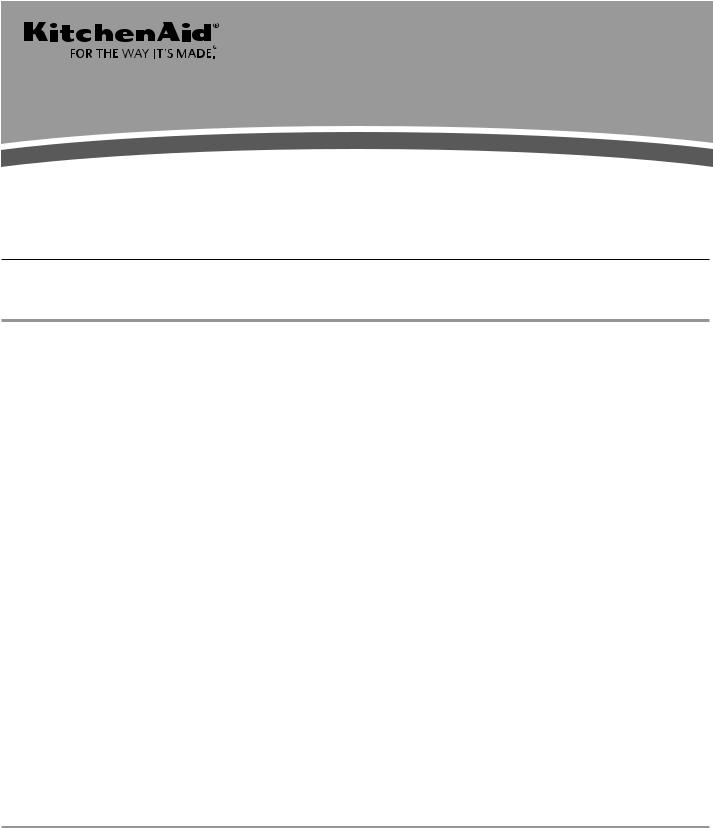
GAS DOUBLE OVEN RANGE
USER INSTRUCTIONS
THANK YOU for purchasing this high-quality product. Register your new range at www.kitchenaid.com. In Canada, register your range at www.kitchenaid.ca.
For future reference, please make a note of your product model and serial numbers. These can be located on the serial plates. The serial plates are located behind the control panel. You may view them by rotating the serial plates up.
Model Number_______________________________________ |
Serial Number________________________________________ |
Para una versión de estas instrucciones en español, visite www.kitchenaid.com.
Deberá tener los números de modelo y serie, que se pueden encontrar en las placas de serie detrás del panel de control. Los puede ver al rotar hacia arriba las placas de serie.
Table of Contents |
|
RANGE SAFETY........................................................................ |
2 |
The Anit-Tip Bracket ............................................................. |
3 |
FEATURE GUIDE ..................................................................... |
4 |
COOKTOP USE........................................................................ |
7 |
Sealed Surface Burners ....................................................... |
7 |
Grates................................................................................... |
8 |
Burner Size............................................................................ |
8 |
Griddle.................................................................................. |
8 |
Cookware.............................................................................. |
9 |
Home Canning ..................................................................... |
9 |
OVEN USE ............................................................................. |
10 |
Electronic Oven Controls ................................................... |
10 |
Keep Warm......................................................................... |
11 |
Sabbath Mode ................................................................... |
11 |
Aluminum Foil .................................................................... |
12 |
Positioning Racks and Bakeware....................................... |
12 |
Roll-Out Rack...................................................................... |
13 |
Oven Vents.......................................................................... |
13 |
Baking and Roasting .......................................................... |
13 |
Broiling ................................................................................ |
14 |
Lower Oven Convection Cooking........................................ |
14 |
EasyConvect™ Conversion ............................................... |
14 |
Slow Cook............................................................................ |
15 |
Proofing Bread..................................................................... |
15 |
Cook Time........................................................................... |
15 |
RANGE CARE ....................................................................... |
16 |
Self-Cleaning Cycle ............................................................ |
16 |
General Cleaning................................................................. |
17 |
Oven Lights......................................................................... |
17 |
PROBLEM SOLVER .............................................................. |
18 |
ACCESSORIES ..................................................................... |
20 |
WARRANTY .......................................................................... |
21 |
W10694059C
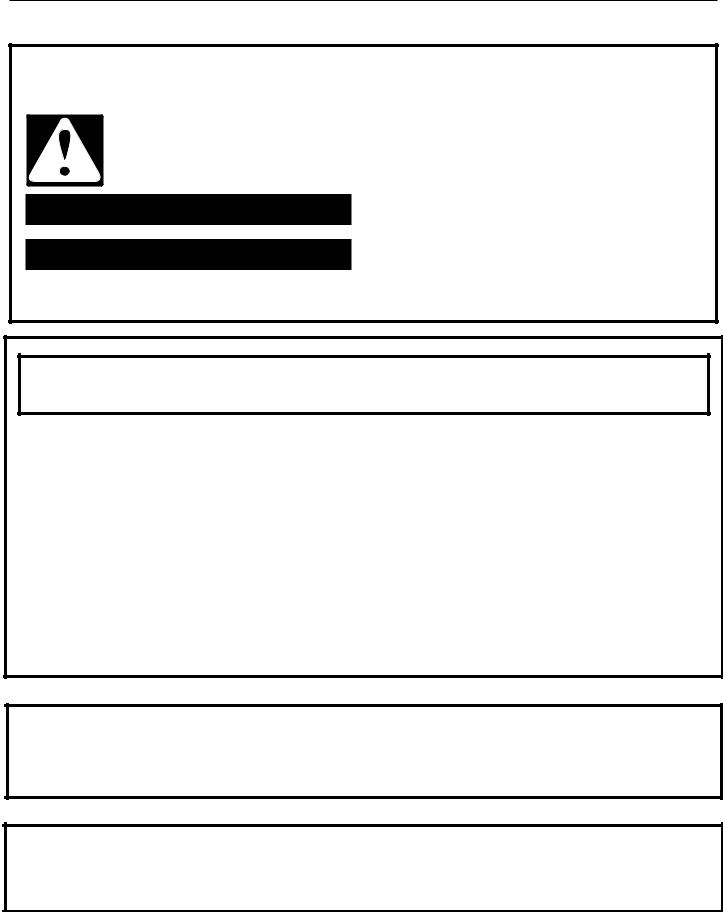
RANGE SAFETY
Your safety and the safety of others are very important.
many important safety messages in this manual and on your appliance. Always read and obey all safety
safety alert symbol.
alerts you to potential hazards that can kill or hurt you and others.
messages will follow the safety alert symbol and either the word “DANGER” or “WARNING.” mean:
 DANGER
DANGER  WARNING
WARNING
You can be killed or seriously injured if you don't immediately follow instructions.
You can be killed or seriously injured if you don't follow instructions.
All safety messages will tell you what the potential hazard is, tell you how to reduce the chance of injury, and tell you what can happen if the instructions are not followed.
WARNING: If the information in this manual is not followed exactly, a fire or explosion may result causing property damage, personal injury or death.
–Do not store or use gasoline or other flammable vapors and liquids in the vicinity of this or any other appliance.
–WHAT TO DO IF YOU SMELL GAS:
•Do not try to light any appliance.
•Do not touch any electrical switch.
•Do not use any phone in your building.
•Immediately call your gas supplier from a neighbor's phone. Follow the gas supplier's instructions.
•If you cannot reach your gas supplier, call the fire department.
–Installation and service must be performed by a qualified installer, service agency or the gas supplier.
WARNING: Gas leaks cannot always be detected by smell.
Gas suppliers recommend that you use a gas detector approved by UL or CSA.
For more information, contact your gas supplier.
If a gas leak is detected, follow the “What to do if you smell gas” instructions.
State of California Proposition 65 Warnings:
WARNING: This product contains one or more chemicals known to the State of California to cause cancer.
WARNING: This product contains one or more chemicals known to the State of California to cause birth defects or other reproductive harm.
2
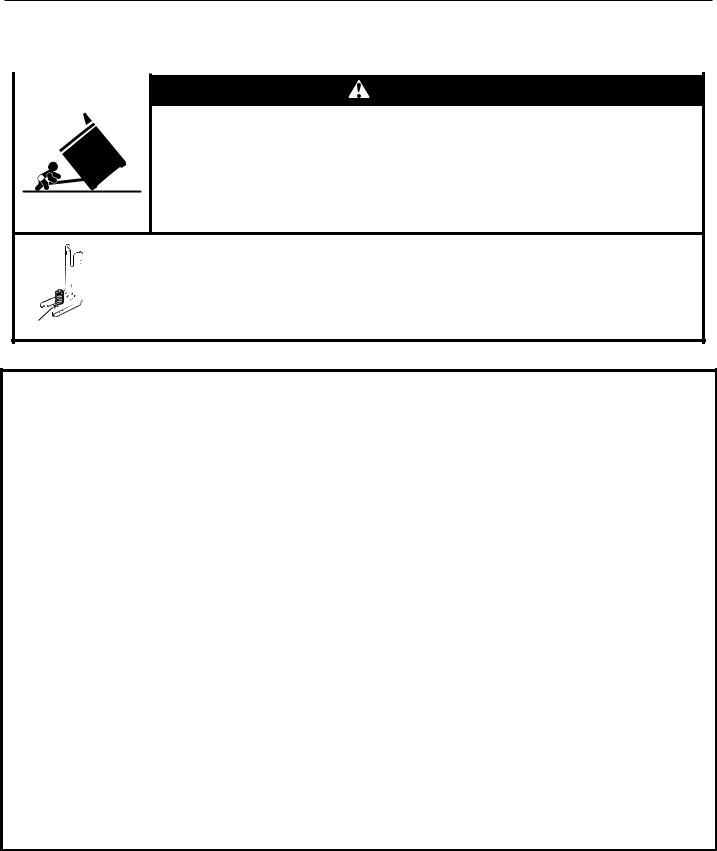
The Anti-Tip Bracket
The range will not tip during normal use. However, the range can tip if you apply too much force or weight to the open door without having the anti-tip bracket fastened down properly.
|
ARNING |
|
Tip Over Hazard |
A child or adult can tip the range |
killed. |
Verify the anti-tip bracket has |
installed and engaged per installation instructions. |
Re-engage anti-tip bracket if range is moved.
Do not operate range without anti-tip bracket installed and engaged.
Failure to follow these instructions can result in death or serious burns to children and adults.
Anti-Tip
 Bracket
Bracket
Range Foot
To verify the anti-tip bracket is installed and engaged:
•Slide range forward.
•Look for the anti-tip bracket securely attached to floor or wall.
•Slide range back so rear range foot is under anti-tip bracket.
•See installation instructions for details.
IMPORTANT SAFETY INSTRUCTIONS
WARNING: To reduce the risk of fire, electrical shock, injury to persons, or damage when using the range, follow basic precautions, including the following:
■ WARNING: TO REDUCE THE RISK OF TIPPING OF THE RANGE, THE RANGE MUST BE SECURED BY PROPERLY INSTALLED ANTI-TIP DEVICES. TO CHECK IF THE DEVICES ARE INSTALLED PROPERLY, SLIDE RANGE FORWARD, LOOK FOR ANTI-TIP BRACKET SECURELY ATTACHED TO FLOOR OR WALL, AND SLIDE RANGE BACK SO REAR RANGE FOOT IS UNDER ANTI-TIP BRACKET.
■ WARNING: NEVER use this appliance as a space heater to heat or warm the room. Doing so may result in carbon monoxide poisoning and overheating of the oven.
■ WARNING: NEVER cover any slots, holes or passages in the oven bottom or cover an entire rack with materials such as aluminum foil. Doing so blocks air flow through the oven and may cause carbon monoxide poisoning. Aluminum foil linings may also trap heat, causing a fire hazard.
■ CAUTION: Do not store items of interest to children in cabinets above a range or on the backguard of a range – children climbing on the range to reach items could be seriously injured.
■Proper Installation – The range, when installed, must be electrically grounded in accordance with local codes or, in the absence of local codes, with the National Electrical Code, ANSI/NFPA 70. In Canada, the range must be electrically grounded in accordance with Canadian Electrical Code. Be sure the range is properly installed and grounded by a qualified technician.
■This range is equipped with a three-prong grounding plug for your protection against shock hazard and should be plugged directly into a properly grounded receptacle. Do not cut or remove the grounding prong from this plug.
■Disconnect power before servicing.
■Injuries may result from the misuse of appliance doors or drawers such as stepping, leaning, or sitting on the doors or drawers.
■Maintenance – Keep range area clear and free from combustible materials, gasoline, and other flammable vapors and liquids.
■Storage in or on the Range – Flammable materials should not be stored in an oven or near surface units.
■Top burner flame size should be adjusted so it does not extend beyond the edge of the cooking utensil.
For self-cleaning ranges –
■Before Self-Cleaning the Oven – Remove broiler pan and other utensils. Wipe off all excessive spillage before initiating the cleaning cycle.
SAVE THESE INSTRUCTIONS
3
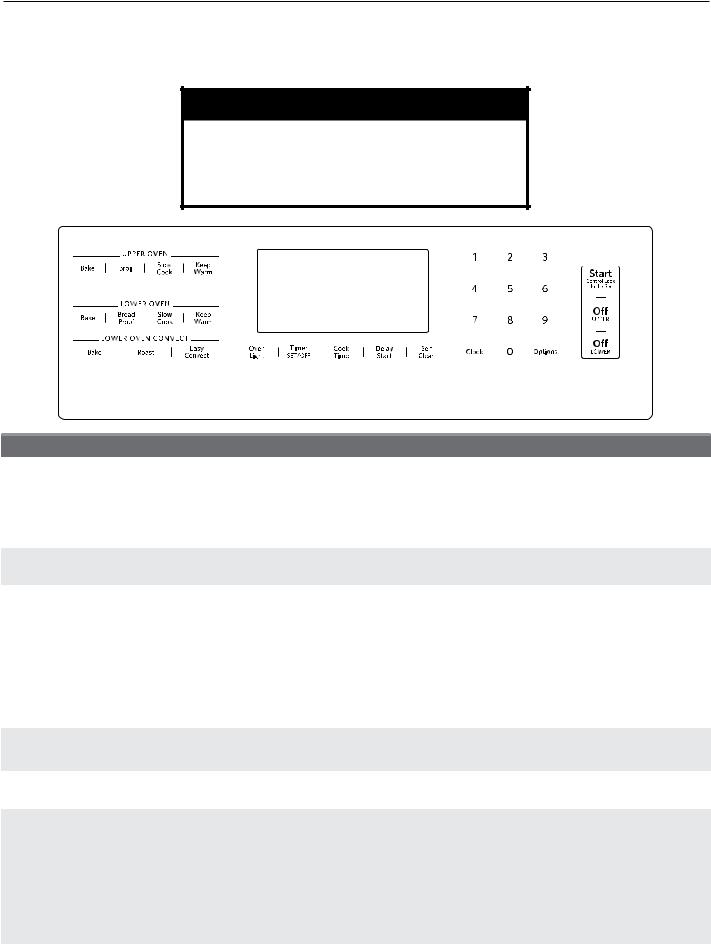
FEATURE GUIDE
This manual covers several models. Your model may have some or all of the items listed. Refer to this manual or the Frequently Asked Questions (FAQs) section of our website at www.kitchenaid.com for more detailed instructions. In Canada, refer
to the Customer Service Section at www.kitchenaid.ca.
 WARNING
WARNING
Food Poisoning Hazard
Do not let food sit in oven more than one hour before or after cooking.
Doing so can result in food poisoning or sickness.
KEYPAD |
FEATURE |
INSTRUCTIONS |
|
|
|
|
|
CLOCK |
Clock |
This clock can use a 12or 24-hour cycle. See “Electronic Oven Controls” section. |
|
|
|
1. |
Press CLOCK |
|
|
2. |
Press “3” for AM or “6” for PM. |
|
|
3. |
Press the number keypads to set the time of day. |
|
|
4. |
Press CLOCK or START. |
OVEN LIGHT |
Oven cavity light |
While the oven doors are closed, press OVEN LIGHT to turn the lights on or off. |
|
|
|
The oven lights will come on when an oven door is opened. |
|
TIMER SET/OFF |
Oven timer |
The Timer can be set in hours or minutes up to 9 hours and 59 minutes. |
|
|
|
1. |
Press TIMER SET/OFF. |
|
|
2. |
Press the number keypads to set the length of time in hr-min-min. Leading |
|
|
|
zeros do not have to be entered. For example, for 2 minutes, enter “2.” |
|
|
3. |
Press TIMER SET/OFF to begin the countdown. If enabled, end-of-cycle tones |
|
|
|
will sound at the end of countdown. The display will return to the time of day at end |
|
|
|
of countdown. |
|
|
4. |
Press TIMER SET/OFF to cancel the Timer and return to the time of day. |
|
|
|
Do not press the Off keypads because the oven will turn off. |
START |
Cooking start |
The Start keypad begins any oven function. If Start is not pressed within 2 minutes after |
|
|
|
pressing a keypad, the function is canceled and the time of day is displayed. |
|
OFF UPPER |
Range function |
The upper and lower Off keypads stop any oven function except the Clock, Timer, |
|
OFF LOWER |
|
and Control Lock in the selected oven. |
|
BAKE UPPER |
Baking and |
1. Press BAKE for the desired oven. |
|
BAKE LOWER |
roasting |
2. |
Press the number keypads to set the desired temperature. If the temperature entered |
|
|
||
|
|
|
is not in the range of the temperatures allowed, the minimum or maximum allowed |
|
|
|
temperature will be displayed. Enter a temperature in the allowable range. |
|
|
3. |
Press START. |
|
|
4. |
To change the temperature, repeat Step 2. Press START for the change to take |
|
|
|
effect. |
|
|
5. |
Press OFF for the selected oven when finished. |
4
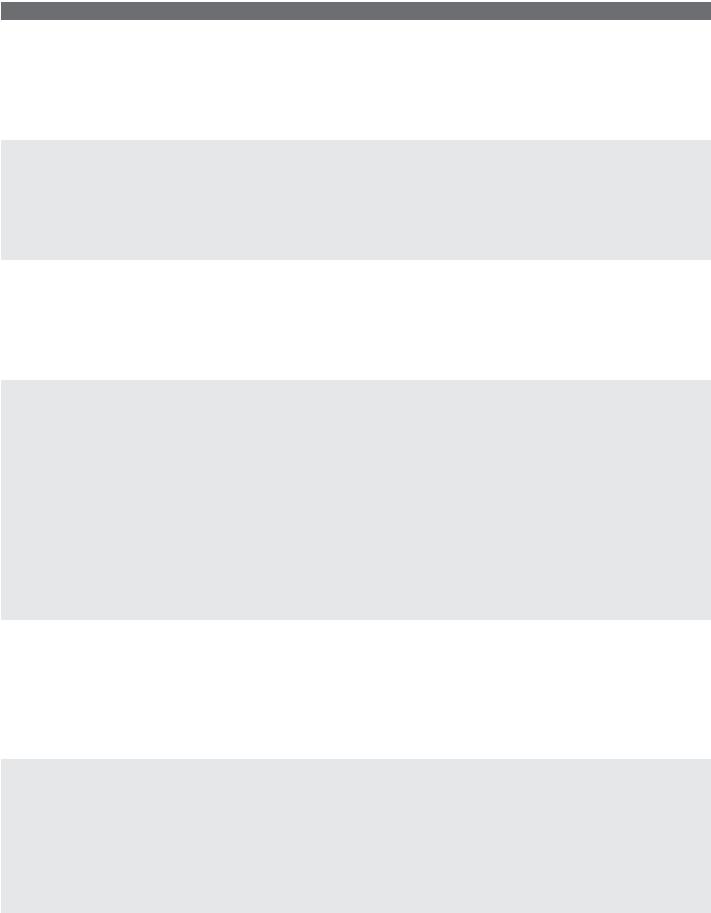
KEYPAD |
FEATURE |
INSTRUCTIONS |
|
BROIL |
Broiling |
1. Press BROIL. |
|
(upper only) |
|
2. |
Press the number keypads to set the desired temperature. If the temperature entered |
|
|
||
|
|
|
is not in the range of the temperatures allowed, the minimum or maximum allowed |
|
|
|
temperature will be displayed. Enter a temperature in the allowable range. |
|
|
3. |
Press START. No preheating is necessary. |
|
|
4. |
Position the cookware in the oven. Close the door. |
|
|
5. |
Press OFF UPPER when finished. |
CONVECT |
Convection |
1. Press CONVECT BAKE. |
|
BAKE |
cooking |
2. |
Press the number keypads to set the desired temperature. If the temperature entered |
|
|
||
|
|
|
is not in the range of the temperatures allowed, the minimum or maximum allowed |
|
|
|
temperature will be displayed. Enter a temperature in the allowable range. |
|
|
3. |
Press START. |
|
|
4. |
To change the temperature, repeat Step 2. Press START for the change to take effect. |
|
|
5. |
Press OFF LOWER when finished. |
CONVECT |
Convection |
1. Press CONVECT ROAST. |
|
ROAST |
cooking |
2. |
Press the number keypads to set the desired temperature. If the temperature entered is |
|
|
||
|
|
|
not in the range of the temperatures allowed, the minimum or maximum temperature will |
|
|
|
be displayed. Enter a temperature in the allowable range. |
|
|
3. |
Press START. |
|
|
4. |
To change the temperature, repeat Step 2. Press START for the change to take effect. |
|
|
5. |
Press OFF LOWER when finished. |
EASY |
Recipe |
NOTE: For best results, preheat your oven to the required temperature prior to using |
|
CONVECT |
conversion for EasyConvect™ Conversion. After preheating is complete, press the OFF LOWER key before |
||
|
convection |
using EasyConvect™ Conversion. |
|
|
cooking |
1. |
Press EASY CONVECT until the desired EasyConvect™ option is displayed (MEATS, |
|
|
||
|
|
|
BAKED GOODS or OTHER). |
|
|
2. |
Press START. |
|
|
3. |
Press the number keypads to enter the standard cook temperature, and then press |
|
|
|
START. |
|
|
4. |
Enter the standard cook time, and then press START. |
|
|
5. |
Place food in the oven at the appropriate time. |
|
|
|
Check food for doneness before the stop time is reached. If food will not be done when |
|
|
|
stop time is reached, add more cooking time before time elapses. See “Cook Time” |
|
|
|
section. At the end of the stop time, the oven will automatically turn off. |
|
|
6. |
Press OFF LOWER when finished. |
Refer to the “EasyConvect™ Conversion” section for more information.
SLOW COOK |
Slow cooking |
It is not necessary to preheat the oven. |
|
UPPER |
|
1. |
Place food in the upper or lower oven. |
SLOW COOK |
|
||
|
2. |
Press SLOW COOK for the desired oven. |
|
LOWER |
|
||
|
3. |
Press the number keypads to set the desired temperature. If the temperature entered |
|
|
|
||
|
|
|
is not in the range of temperatures allowed, the minimum or maximum allowed |
|
|
|
temperature will be displayed. Enter a temperature in the allowable range. |
|
|
4. |
Press START. |
|
|
5. |
Press OFF for the selected oven when finished. |
BREAD PROOF |
Proofing bread |
1. Press BREAD PROOF until the desired proof choice is displayed (“Standard Proof” or |
|
|
|
|
“Rapid Proof”). |
|
|
|
NOTE: “Rapid” operates at a slightly higher temperature for the second rise of formed |
|
|
|
dough. |
|
|
2. |
Press START. |
|
|
|
Let the dough rise until nearly doubled in size. Proofing time may vary depending on |
|
|
|
dough type and quantity. |
|
|
3. |
Press OFF LOWER when finished proofing. |
Refer to the “Proofing Bread” section for more information.
5
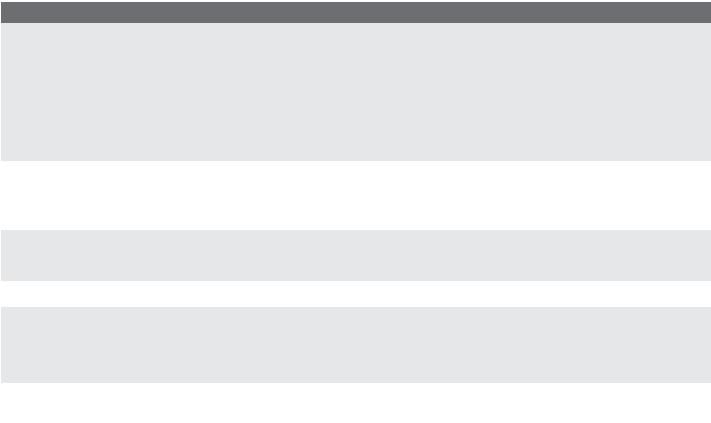
KEYPAD |
FEATURE |
INSTRUCTIONS |
|
|
|
|
|
KEEP WARM UPPER |
Hold warm |
Food must be at serving temperature before placing it in the warmed oven. |
|
KEEP WARM LOWER |
|
1. |
Press KEEP WARM for the desired oven. |
|
|
||
|
|
2. |
Press the number keypads to set the desired temperature. If the temperature |
|
|
|
entered is not in the range of the temperature allowed, the minimum or maximum |
|
|
|
temperature will be displayed. Enter a temperature in the allowable range. |
|
|
3. |
Press START. |
|
|
4. |
To change the temperature, repeat steps 2 and 3. |
|
|
5. |
Press OFF for the selected oven when finished. |
DELAY START |
Delayed start |
The Delay Start keypad is used to enter the starting time for an oven function |
|
|
|
with a delayed start. Delay Start should not be used for foods such as breads |
|
|
|
and cakes because they may not bake properly. |
|
|
|
To set a Cook Time or a Delayed Cook Time, see the “Cook Time” section. |
|
COOK TIME |
Timed cooking |
Cook Time allows the oven to be set to turn on at a certain time of day, cook |
|
|
|
for a set length of time, and/or shut off automatically. |
|
|
|
To set a Cook Time or a Delayed Cook Time, see the “Cook Time” section. |
|
SELF CLEAN |
Self-clean cycle |
See the “Self-Cleaning Cycle” section. |
|
START CONTROL |
Oven control |
1. |
Check that the ovens and timers are off. |
LOCK hold 5 sec. |
lockout |
2. |
Press and hold START for 5 seconds. |
|
|
||
|
|
3. |
If enabled, a tone will sound, and “CONTROL LOCK” will be displayed. |
|
|
4. |
Repeat to unlock. No keypads will function with the controls locked. |
OPTIONS |
Oven use |
Enables you to personalize the audible tones and oven operation to suit your needs. |
|
|
functions |
See the “Oven Use” section. |
|
|
|
|
|
6

COOKTOP USE
 WARNING
WARNING
Fire Hazard
Do not let the burner flame extend beyond the edge of the pan.
Turn off all controls when not cooking.
Failure to follow these instructions can result in death or fire.
Electric igniters automatically light the surface burners when control knobs are turned to 
Before setting a control knob, place filled cookware on the grate. Do not operate a burner using empty cookware or without cookware on the grate.
The flame should be adjusted so it does not extend beyond the edge of the pan.
To Set:
1.Push in and turn knob counterclockwise to 
All surface burners will click. Only the burner with the control knob turned to will produce a flame.
will produce a flame.
2.Turn knob to anywhere between HIGH and LOW.
REMEMBER: When range is in use or (on some models) during the Self-Cleaning cycle, the entire cooktop area may become hot.
Power Failure
In case of prolonged power failure, the surface burners can be lit manually. Hold a lit match near a burner and turn knob
counterclockwise to  . After burner lights, turn knob to desired setting.
. After burner lights, turn knob to desired setting.
Sealed Surface Burners
A |
|
|
|
|
A |
B |
D |
|
|
C |
|
|
|
|
|
E |
D |
C |
|
|
|
A. Burner cap |
C. Alignment pins |
|
B. Burner base |
D. Igniter |
|
|
E. Gas tube opening |
IMPORTANT: Do not obstruct the flow of combustion and ventilation air around the burner grate edges.
Burner Cap: Always keep the burner cap in place when using a surface burner. A clean burner cap will help avoid poor ignition and uneven flames. Always clean the burner cap after
a spillover and routinely remove and clean the caps according to the “General Cleaning” section.
Gas Tube Opening: Gas must flow freely throughout the gas tube opening for the burner to light properly. Keep this area free of soil and do not allow spills, food, cleaning agents, or any other material to enter the gas tube opening. Keep spillovers out of the gas tube by always using a burner cap.
 A
A

B
A.1 to 1¹⁄2" (2.5 to 3.8 cm)
B.Burner ports
Burner Ports: Check burner flames occasionally for proper size and shape as shown in the previous illustration. A good flame is blue in color, not yellow. Keep this area free of soil and do not allow spills, food, cleaning agents, or any other material
to enter the burner ports.
7
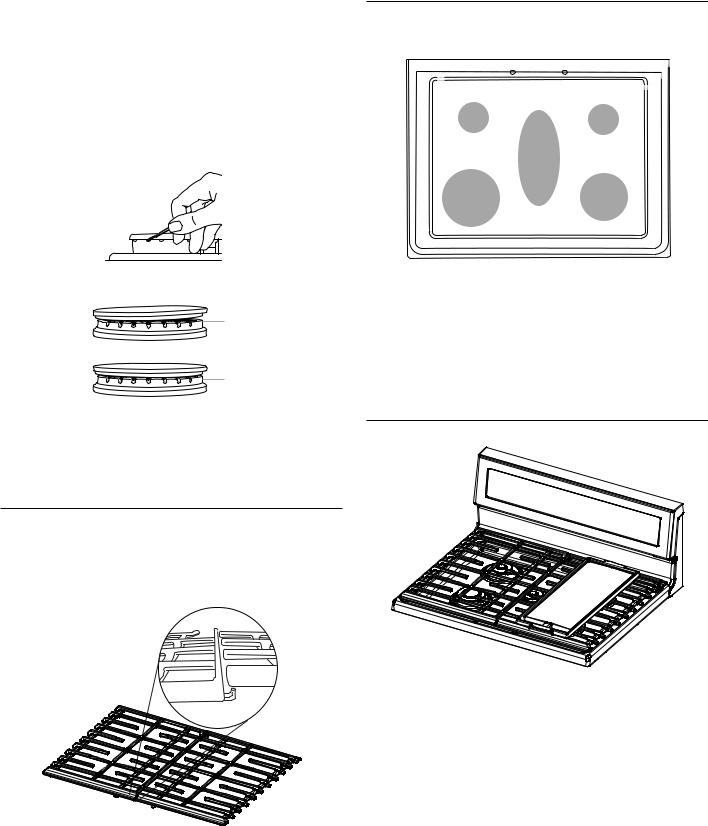
To Clean:
IMPORTANT: Before cleaning, make sure all controls are off and the oven and cooktop are cool. Do not use oven cleaners, bleach or rust removers.
1.Remove the burner cap from the burner base and clean according to “General Cleaning” section.
2.Clean the gas tube opening with a damp cloth.
3.Clean clogged burner ports with a straight pin as shown. Do not enlarge or distort the port. Do not use a wooden toothpick. If the burner needs to be adjusted, contact
a trained repair specialist.
4.Replace the burner cap, making sure the alignment pins are properly aligned with the burner cap.
A
B
A.Incorrect
B.Correct
5.Turn on the burner. If the burner does not light, check cap alignment. If the burner still does not light, do not service the sealed burner yourself. Contact a trained repair specialist.
Grates
The grates on this range cover the full width of the cooktop. The two grates may interlock (on some models), using the hook formed into one end of both grates. The flat end of one grate drops onto the hook on the other grate as shown in the following illustration.
On some models, the two grates are identical and can be used on either the left or right side of the cooktop. Grates that are designed for use on only one side of the cooktop will have either “LEFT” or “RIGHT” embossed on the bottom side
of the grate.
Burner Size
Select a burner that best fits your cookware. See the following illustration and chart.
|
Back of Range |
|
Small |
Small |
|
|
Oval |
|
Extra |
Large |
|
Large |
||
|
||
|
Front of Range |
|
|
|
|
Burner Size |
Recommended Use |
|
|
|
|
Small |
■■ Low-heating cooking |
|
|
■■ Melt chocolate or butter |
|
|
|
|
Oval |
■■ For longer dishes |
|
|
|
|
Large |
■■ For large cookware |
|
|
|
|
Extra-Large |
■■ Most powerful burner |
|
|
■■ For large cookware |
Griddle
Griddle installed on right side of cooktop
To Use the Griddle:
1.Locate the griddle on the right side grate as shown.
The locating feet on the bottom of the griddle will engage the grate tines to keep the griddle from sliding.
2.Before each use, brush on a thin layer of cooking oil to keep food from sticking. Cooking sprays may leave a sticky residue on the griddle that is hard to remove.
3.Preheat the griddle for 5 minutes. Preheating the griddle slowly will ensure even heat distribution and will avoid warping the griddle.
4.For preheating and cooking, set the front burner to the lowest heat setting and the rear burner to Medium-High heat for best performance.
NOTE: The griddle may also be used on the left side grate. For best results, the rear burner setting should be set to Medium-Low or Medium, and the front burner setting should be set to Low.
8

To Clean the Griddle:
1.Let the griddle cool, and then empty the drip tray.
2.See the “General Cleaning” section for cleaning instructions.
3.Store griddle in a cool dry place.
Cookware
IMPORTANT: Do not leave empty cookware on a hot surface cooking area, element, or surface burner.
Ideal cookware should have a flat bottom, straight sides, and a well-fitting lid, and the material should be of medium-to-heavy thickness.
Rough finishes may scratch the cooktop or grates. Aluminum and copper may be used as a core or base in cookware.
Cookware material is a factor in how quickly and evenly heat is transferred, which affects cooking results.
Cookware with nonstick surfaces should not be used under the broiler.
Check for flatness by placing the straight edge of a ruler across the bottom of the cookware. While you rotate the ruler, no space or light should be visible between it and the cookware.
1 2
|
3 |
1 |
4 |
5 |
6 2
1 2
|
1 3 |
|
|
|
5 |
1 |
4 |
|
|
|
|
|
||
|
|
1 5 |
|
|
|
|
6 |
1 |
6 |
|
|
|
1 7 |
|
1 8 |
|
7 |
1 |
9 |
|
|
2 0 |
Use the following chart as a guide for cookware material characteristics.
Cookware Characteristics
Aluminum ■■ Heats quickly and evenly.
■■ Suitable for all types of cooking.
■■ Medium or heavy thickness is best for most cooking tasks.
Cast iron ■■ Heats slowly and evenly.
■■ Good for browning and frying. ■■ Maintains heat for slow cooking.
Cookware |
Characteristics |
|
|
Ceramic or |
■■ Follow manufacturer’s instructions. |
Ceramic glass |
■■ Heats slowly but unevenly. |
|
|
|
■■ Ideal results on low to medium heat |
|
settings. |
|
|
Copper |
■■ Heats very quickly and evenly. |
|
■■ May leave copper residues, |
|
which may be diminished if cleaned |
|
immediately after cooking. |
|
|
Earthenware/ |
■■ Follow manufacturer’s instructions. |
Stoneware |
■■ Use on low heat settings. |
|
|
|
|
Porcelain |
■■ See stainless steel or cast iron. |
enamel-on-steel |
|
or cast iron |
|
|
|
Stainless steel |
■■ Heats quickly but unevenly. |
|
■■ A core or base of aluminum or copper |
|
on stainless steel provides even |
|
heating. |
For best results, the cookware should be centered above
the burner with the bottom sitting level on the grate. The flame should be adjusted so that it does not extend up the sides
of the pan.
Home Canning
When canning for long periods, alternate the use of surface burners between batches. This allows time for the most recently used areas to cool.
■Center the canner on the grate above the burner.
■Do not place canner on 2 surface burners at the same time.
■For more information, contact your local agricultural extension office, or refer to published home canning guides. Companies that manufacture home canning products can also offer assistance.
9
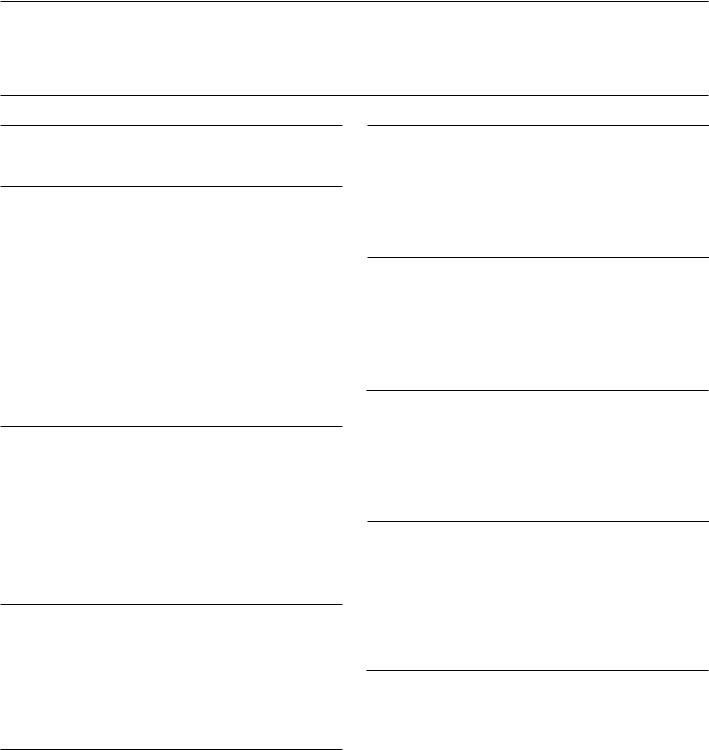
OVEN USE
Odors and smoke are normal when the oven is used the first few times or when it is heavily soiled.
IMPORTANT: The health of some birds is extremely sensitive to the fumes given off. Exposure to the fumes may result in death to certain birds. Always move birds to another closed and well-ventilated room.
Electronic Oven Controls
Control Display
The display will light up when first powered up or after a power loss. When oven is not in use, the time of day is displayed.
Tones
Tones are audible signals, indicating the following:
One Tone
■Valid keypad press.
■Oven is preheated (long tone).
■Kitchen timer (long tone with reminder tone every 60 seconds).
■Function has been entered.
Three Tones
■Invalid keypad press.
Four Tones
■End of cycle (with reminder tone every 60 seconds). Use the Options keypad to change the tone settings.
Options
Many features of the oven control can be adjusted to meet your personal needs. These changes are made using the Options keypad.
Use the Options keypad to scroll through the features that can be changed. Each press of the Options keypad will advance the display to the next setting. After selecting the feature
to be changed, the control will prompt you for the required input. Details of all of the feature changes are explained in the following sections.
Press OFF UPPER or OFF LOWER to exit Options.
Fahrenheit and Celsius
The temperature is preset to Fahrenheit, but can be changed to Celsius.
1.Press OPTIONS until “TEMP UNIT” is displayed.
2.The current setting will be displayed.
3.Press the “1” keypad to adjust the setting.
4.Press OFF UPPER or OFF LOWER to exit and display the time of day.
Audible Tones Disable
Turns off all tones, including the end of cycle tone and key press tones.
1.Press OPTIONS until “SOUND” is displayed.
2.The current setting will be displayed.
3.Press the “1” keypad to adjust the setting.
4.Press OFF UPPER or OFF LOWER to exit and display the time of day.
Sound Volume
Sets the pitch of the tone to either high or low.
1.Press OPTIONS until “SOUND VOLUME” is displayed.
2.The current setting will be displayed.
3.Press the “1” keypad to adjust the setting.
4.Press OFF UPPER or OFF LOWER to exit and display the time of day.
End of Cycle Tone
Activates or turns off the tones that sound at the end of a cycle.
1.Press OPTIONS until “END TONE” is displayed.
2.The current setting will be displayed.
3.Press the “1” keypad to adjust the setting.
4.Press OFF UPPER or OFF LOWER to exit and display the time of day.
Key Press Tones
Activates or turns off the tones when a keypad is pressed.
1.Press OPTIONS until “KEYPRESS TONE” is displayed.
2.The current setting will be displayed.
3.Press the “1” keypad to adjust the setting.
4.Press OFF UPPER or OFF LOWER to exit and display the time of day.
Reminder Tones Disable
Turns off the short repeating tone that sounds every 1 minute after the end of cycle tones.
1.Press OPTIONS until “REMINDER TONE” is displayed.
2.The current setting will be displayed.
3.Press the “1” keypad to adjust the setting.
4.Press OFF UPPER or OFF LOWER to exit and display the time of day.
12/24 Hour Clock
1.Press OPTIONS until “12/24 HOUR” is displayed.
2.The current setting will be displayed.
3.Press the “1” keypad to adjust the setting.
4.Press OFF UPPER or OFF LOWER to exit and display the time of day.
10
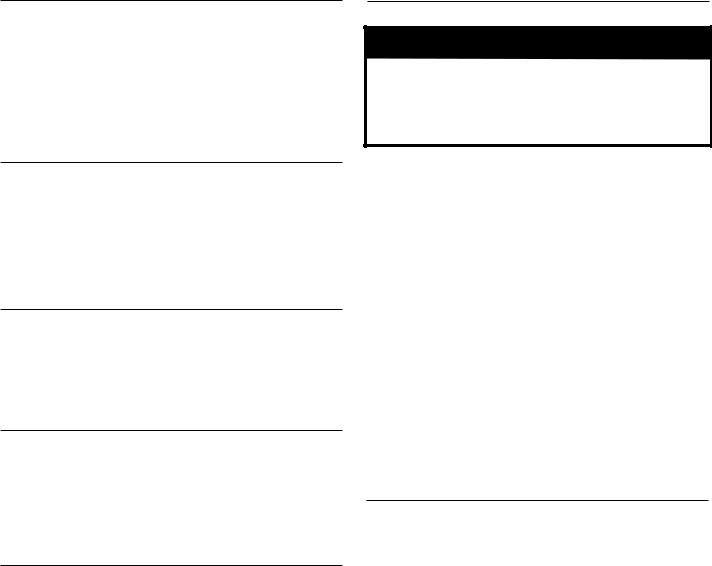
Demo Mode
IMPORTANT: This feature is intended for use on the sales floor with 120V power connection and permits the control features to be demonstrated without heating elements turning on. If this feature is activated, the oven will not work.
1.Press OPTIONS until “DEMO MODE” is displayed.
2.The current setting will be displayed.
3.Press the “1” keypad to adjust the setting.
4.Press OFF UPPER or OFF LOWER to exit and display the time of day.
12-Hour Shutoff
The oven control is set to automatically shut off the oven 12 hours after the oven initiates a cook or clean function.
This will not interfere with any timed or delay cook functions.
1.Press OPTIONS until “12 HR AUTO OFF” is displayed.
2.The current setting will be displayed.
3.Press the “1” keypad to adjust the setting.
4. Press OFF UPPER or OFF LOWER to exit and display the time of day.
Languages – Scrolling Display Text
Language options are English, Spanish, and French.
1.Press OPTIONS until “LANGUAGE” is displayed.
2.The current setting will be displayed.
3.Press the number keypad to adjust the setting.
4.Press OFF UPPER or OFF LOWER to exit and display the time of day.
Energy Save
The Energy Save mode deactivates the display to reduce energy consumption.
1.Press OPTIONS until “ENERGY SAVE” is displayed.
2.The current setting will be displayed.
3.Press the “1” keypad to adjust the setting.
4.Press OFF UPPER or OFF LOWER to exit and display the time of day.
Oven Temperature Offset Control
IMPORTANT: Do not use a thermometer to measure oven temperature. Elements will cycle on and off as needed to provide consistent temperature, but they may run slightly hot or cool at any point in time due to this cycling. Most thermometers are slow to react to temperature change and will not provide an accurate reading due to this cycling.
The oven provides accurate temperatures; however, it may cook faster or slower than your previous oven, so the
temperature can be adjusted to personalize it for your cooking needs. It can be changed to Fahrenheit or Celsius.
To Adjust Oven Temperature:
1.Press OPTIONS until “TEMP CALIB” is displayed.
2.The current setting will be displayed. Press the “1” keypad to toggle between the upper and lower ovens.
3.Press START to select the choice displayed in Step 2. Wait 10 seconds for the display to change or press START, and then continue with Step 4.
4.Press the “3” keypad to increase the temperature in 5°F (3°C) increments, or press the “6” keypad to decrease the temperature in 5°F (3°C) increments. The range is from -30°F to +30°F (-18°C to +18°C).
5. Press START.
6.Press OFF UPPER or OFF LOWER to exit and display the time of day.
Keep Warm
 WARNING
WARNING
Food Poisoning Hazard
Do not let food sit in oven more than one hour before or after cooking.
Doing so can result in food poisoning or sickness.
IMPORTANT: Food must be at serving temperature before placing it in the warmed oven. Food may be held up to 1 hour; however, breads and casseroles may become too dry if left
in the oven during the Keep Warm function. For best results, cover food.
The Keep Warm feature allows hot cooked foods to stay at serving temperature.
To Use:
1.Press KEEP WARM for the desired oven.
2.Press the number keypads to set the desired temperature.
If the temperature entered is not in the range of temperatures allowed, the minimum or maximum allowed temperature will be displayed. Enter a temperature in the allowable range.
NOTE: The temperature may be changed at any time by pressing the number keypads to enter the desired temperature and then START.
3.Press START.
4.Place food in the oven.
5.Press OFF for the selected oven when finished.
6.Remove food from oven.
To Cancel Keep Warm Feature:
Press OFF for the desired oven. Remove food from oven.
Sabbath Mode
The Sabbath Mode sets the oven to remain on in a baking setting until turned off.
When Sabbath Mode is set, only the Bake cycle will operate. All other cooking and cleaning cycles are disabled. No tones will sound, and the displays will not indicate temperature changes.
When the oven door is open or closed, the oven light will not turn on or off, and the heating elements will not turn on or off immediately.
To Enable Sabbath Mode Capability (One Time Only):
1.Press OPTIONS until “SABBATH” is displayed.
2.Press the “1” keypad. Sabbath Mode can be activated for baking.
3.Press OFF UPPER or OFF LOWER to save the setting and exit to display the time of day.
NOTE: to disable the Sabbath Mode, repeat steps
1 through 3 to change the status from “SABBATH ON” to “SABBATH OFF.”
To Activate Sabbath Mode:
1.Press BAKE for the desired oven.
2.Press the number keypads to set the desired temperature. If the temperature entered is not in the range of temperatures allowed, the minimum or maximum allowed temperature will be displayed. Enter a temperature in the allowable range.
3.Press START.
For the timed cooking in Sabbath Mode, press COOK TIME, and then press the number keypads to set the desired cook time. Press START.
11

4.(Optional) If Sabbath Mode is to be used for both ovens, repeat steps 1 through 3 for the second oven.
5.Press OPTIONS. Three tones will sound. Then press “7.” “SAb” will appear in the display.
To Adjust Temperature (when Sabbath Mode is running in only one oven):
1.Press the number keypad as instructed by the scrolling text to select the new temperature.
NOTE: The temperature adjustment will not appear on the display, and no tones will sound. The scrolling text will be shown on the display as it was before the keypad was pressed.
2.Press START.
To Adjust Temperature (when Sabbath Mode is running in both ovens):
1.Press BAKE for the desired oven.
2.Press the number keypad as instructed by the scrolling text to select the new temperature.
NOTE: The temperature adjustment will not appear on the display, and no tones will sound. The scrolling text will be shown on the display as it was before the keypad was pressed.
3.Press START.
To Deactivate Sabbath Mode:
Press OPTIONS, then press “7” to return to regular baking, or press OFF UPPER or OFF LOWER to turn off the oven(s).
Aluminum Foil
IMPORTANT: To avoid permanent damage to the oven bottom finish, do not line the oven bottom with any type of foil or liner.
For best cooking results, do not cover entire rack with foil because air must move freely.
Positioning Racks and Bakeware
IMPORTANT: To avoid permanent damage to the porcelain finish, do not place food or bakeware directly on the oven door or bottom.
Racks
■■ Position racks before turning on the oven.
■■ Do not position racks with bakeware on them. ■■ Make sure racks are level.
■■ Place food so it will not rise into the broil element. Allow at least 1/2" (1.3 cm) between pans and the broil element.
To move a rack, pull it out to the stop position, raise the front edge, and then lift it out. Use the following illustrations and charts as a guide for positioning racks.
Rack Positions – Upper Oven
|
2 |
|
1 |
Baking and Broiling |
|
Food |
Rack Position |
All foods |
1 |
Rack Positions – Lower Oven
5
4
3
2
1
Food |
Rack Position |
|
|
Large roasts or poultry |
1 |
|
|
Roasted meats |
2 |
|
|
Most baked goods, |
3 |
casseroles |
|
|
|
Broiled meats, poultry, fish |
4 |
|
|
Broiling/searing meats, |
5 |
hamburgers, steaks |
|
For hamburger patties to have a well-seared exterior and
a rare interior in the lower oven, use a flat rack in rack position 5. Side 1 should cook for approximately 21/2 to 31/2 minutes. Side 2 should cook for approximately 4 to 5 minutes. Expect a moderate degree of smoke when broiling.
Multiple Rack Cooking
2-rack: Use rack positions 2 and 4 for regular baking with the roll-out rack in position 2.
2-rack (convection only): Use rack positions 2 and 4 for convection baking with the roll-out rack in position 2.
NOTE: The roll-out rack in the lower oven sits midway between adjacent rack positions. The roll-out rack should not be used in rack position 5.
Baking Layer Cakes on 2 Racks
For best results when baking cakes on 2 racks, use rack positions 1 (roll-out rack) and 4 (flat rack) with the Convection Bake function. Place the cakes on the racks as shown. If using two flat racks, use rack positions 2 and 4.
Baking Cookies on 2 Racks
For best results when baking cookies on 2 racks, use rack positions 1 (roll-out rack) and 4 (flat rack) with the Bake function. If using 2 flat racks, use rack positions 2 and 4.
Bakeware
To cook food evenly, hot air must be able to circulate. Allow 2" (5.0 cm) of space around bakeware and oven walls. Use the following chart as a guide.
Number of Pan(s) |
Position on Rack |
|
|
1 |
Center of rack |
|
|
2 |
Side by side |
|
|
3 or 4 |
Refer to the previous illustration. |
12
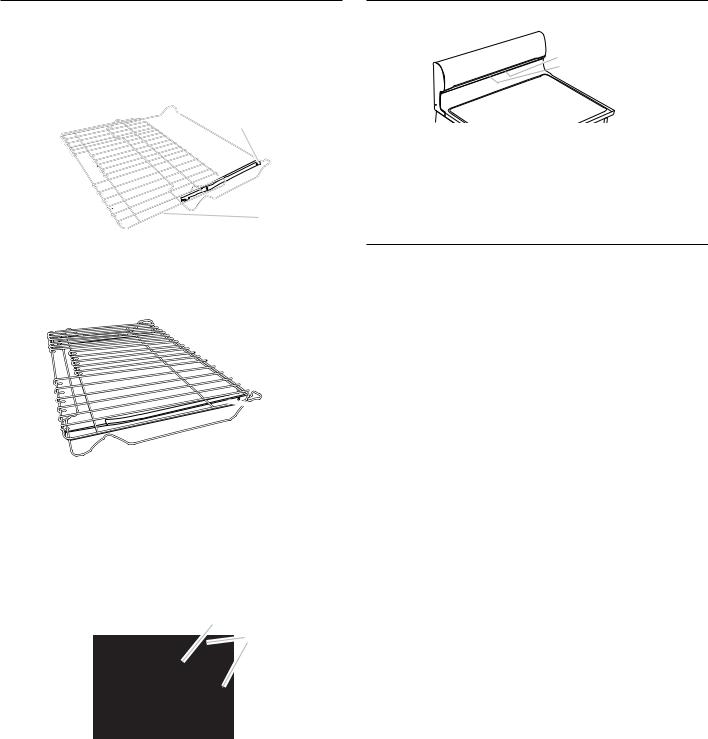
Roll-out Rack
The roll-out rack allows easy access to position and remove food in the oven. The roll-out rack should not be used in rack position 5.
Open Position
 A
A
B
A.Sliding rails
B.Sliding shelf
Closed and Engaged Position
 B
B
 A
A
A.Slide rails
B.Sliding Shelf
To Insert Roll-Out Rack
1.Angle rack assembly up, and then insert into the “V” cutout in the rack guides of the oven cavity.
2.Keep rack assembly lifted up at an angle, and then push in to bypass the lower “V” cutout.
3.Gently slide rack assembly into oven, bypassing the “V”
cutouts. |
A |
|
B
A.“V” cutout
B.Rack guides
To Remove Roll-Out Rack
1.Push the sliding shelf in completely so that it is in the closed and engaged position.
2.Using 2 hands, gently pull the sliding shelf and the slide rails at the same time to the “V” cutout. Angle the rack so that the front is higher than the back, and then gently pull rack past “V” cutout and then out of the oven.
To avoid damage to the sliding shelves, do not place more than 25 lbs. (11.4 kg) on the rack.
Do not clean the roll-out rack in the dishwasher. It may remove the rack’s lubricant and affect its ability to slide.
See the “General Cleaning” section for more information.
Oven Vents
A
 B
B
A.Upper oven vent
B.Lower oven vent
The oven vents release hot air and moisture from the ovens and should not be blocked or covered. Blocking or covering the vents will cause poor air circulation, affecting cooking and cleaning results. Do not set plastics, paper, or other items that could melt or burn near the oven vents.
Baking and Roasting
Preheating
When beginning a Bake, Convect Bake, or Convect Roast cycle, the oven will begin preheating after Start is pressed. The oven will take approximately 12 to 15 minutes to reach 350°F (177°C) with all of the oven racks provided with your oven inside the oven cavity. Higher temperatures will take longer to preheat. The preheat cycle rapidly increases the oven temperature. The actual oven temperature will go above your set temperature to offset the heat lost when your oven door is opened to insert food. This ensures that when you place your food in the oven, the oven will begin at the proper temperature. Insert your food when the preheat tone sounds. Do not open the door during preheat before the tone sounds.
Oven Temperature
While in use, the oven elements will cycle on and off as needed to maintain a consistent temperature, but they may run slightly hot or cool at any point in time due to this cycling. Opening the oven door while in use will release hot air and cool the oven which could impact the cooking time and performance. It is recommended to use the oven light to monitor cooking progress.
NOTE: On models with convection, the convection fan may run in the non-convection bake mode to improve performance.
Temperature Management System
The Temperature Management System electronically regulates the oven heat levels during preheat and bake to maintain a precise temperature range for optimal cooking results. The bake and broil elements or burners cycle on and off in intervals. On convection range models, the fan will run while preheating and may be cycled on and off for short intervals during bake to provide the best results. This feature is automatically activated when the oven is in use.
Before baking and roasting, position racks according to the “Positioning Racks and Bakeware” section. When roasting, it is not necessary to wait for the oven preheat cycle to end before putting food in unless it is recommended in the recipe.
13
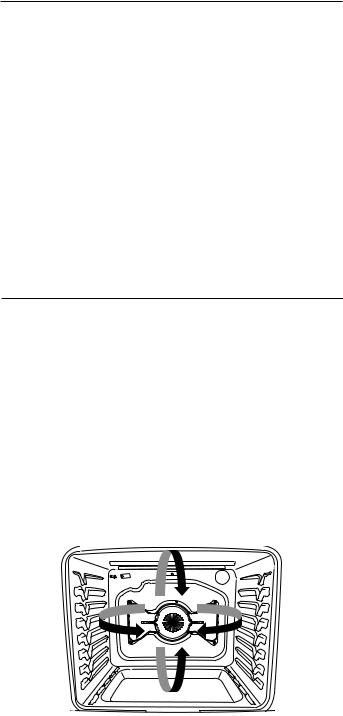
Broiling
Close the oven door while broiling. No preheating is necessary. Position food on grid in a broiler pan, and then place it in the center of the oven rack.
NOTE: Odors and smoke are normal the first few times the oven is used or if the oven is heavily soiled.
Changing the temperature when broiling allows more precise control when cooking. The lower the broil setting, the slower the cooking. Thicker cuts and unevenly shaped pieces of meat, fish, and poultry may cook better at lower broil settings. Refer to the “Positioning Racks and Bakeware” section for more information.
On lower settings, the broil element will cycle on and off to maintain the proper temperature.
■For best results, use a broiler pan and grid. It is designed to drain juices and help avoid spatter and smoke.
If you would like to purchase a broiler pan, one may be ordered. Please refer to the “Accessories” section for more information.
Lower Oven Convection Cooking
In a convection oven, the fan-circulated hot air continually distributes heat more evenly than the natural movement of air in a standard thermal oven. This movement of hot air
helps maintain a consistent temperature throughout the oven, cooking foods more evenly, crisping surfaces while sealing in moisture and yielding crustier breads.
During the convection cooking, the bake, broil, and convection (true convection only) elements cycle on and off in intervals
to maintain the oven temperature, while the fan circulates the hot air.
If the oven door is opened during convection cooking, the fan will turn off immediately. It will come back on when the oven door is closed.
NOTE: The oven door must be closed for convection broiling.
Position the racks according to the “Positioning Racks and Bakeware” section before starting convection cooking.
With convection cooking, most foods can be cooked at a lower temperature or for a shorter length of time. These adjustments can be made using the following chart or by using the EasyConvect™ Conversion feature on your range.
14
Setting |
Guidelines |
CONVECT |
Reduce the standard baking temperature |
BAKE |
25°F (12°C). |
|
|
CONVECT |
Use standard recipe temperature. Cooking |
BROIL |
time may be reduced so the food should be |
|
checked for doneness early. |
|
|
CONVECT |
Use standard recipe temperature. Cooking |
ROAST |
time may be reduced by 15 to 30% with |
|
Convect Roast so the food should be |
|
checked for doneness early. |
Bow Tie True Convection with T.H.E.™ Element
True convection adds an electric element around the convection fan to enhance the cooking performance. Use the following Convect Options chart as a guide.
|
Setting |
Foods |
|
|
|
|
CONVECT |
Single or multiple-rack baking for cookies, |
|
BAKE |
biscuits, breads, casseroles, tarts, tortes. |
|
|
|
|
CONVECT |
Thicker cuts or unevenly shaped pieces |
|
BROIL |
of meat, fish, or poultry. |
|
|
|
|
CONVECT |
Whole chicken or turkey, vegetables, pork |
|
ROAST |
roasts, beef roasts. |
|
|
|
EasyConvect™ Conversion
Convection cooking temperatures and times can differ from those of standard cooking. Depending upon the selected category, EasyConvect™ Conversion automatically reduces the standard recipe temperature and/or time you input for convection cooking.
Foods are grouped into 3 general categories. Choose the category most appropriate for the food to be cooked. Use the following chart as a guide.
Setting |
Foods |
MEATS |
Chicken: whole and pieces |
|
Meat loaf, Roasts: pork, beef, and ham |
|
(Turkey and large poultry are not included |
|
because their cook time varies.) |
|
|
BAKED |
Biscuits, Breads: quick and yeast |
GOODS |
Cakes and Cookies |
|
|
|
Casseroles |
|
|
OTHER |
Frozen convenience foods: french fries, |
|
nuggets, fish sticks, lasagna |
To Use:
NOTE: For best results, preheat your oven to the desired temperature prior to using EasyConvect™ Conversion. After preheating is complete, press OFF LOWER before using EasyConvect™ Conversion.
1.Press EASY CONVECT until the desired option (MEATS, BAKED GOODS or OTHER) is displayed.
2.Press START.
3.Press number pads to enter standard cook temperature, and then press START.
4.Press number pads to enter standard cook time, and then press START.
5.Place the food in the oven.
Check food for doneness before the stop time is reached. If food will not be done when the stop time is reached, add more cooking time before time elapses. See “Cook Time” section. At the end of the stop time, the oven will automatically turn off.
6.Press OFF LOWER when finished.
7.Remove food from the oven.

Slow Cook
Slow Cook is best for food items such as beef, poultry, and pork. This cycle is available to cook food at low temperatures for long periods of time. Food can be cooked up to 12 hours depending on the temperature chosen.
Recommended Temperature Range:
4 hour cook time = 250°F to 300°F (120°C to 150°C) 8 hour cook time = 200°F to 250°F (93°C to 120°C) 12 hour cook time = 170°F to 226°F (77°C to 108°C) ■■ Food should be completely thawed.
■■ Cover food to keep moist.
■■ Prior to Slow Roasting, meat can be pan seared or broiled on the sides to enhance browning, flavor, and tenderness.
■■ Use a flat rack in position 3 for best results.
To Use Slow Cook:
Before using Slow Cook, see the “Positioning Racks and Bakeware” section. It is not necessary to preheat the oven.
1.Place food in the oven.
2.Press SLOW COOK for the desired oven.
3.Press the number keypads to set the desired temperature. If the temperature entered is not in the range of the temperatures allowed, the minimum or maximum allowed temperature will be displayed. Enter a temperature
in the allowable range.
4.Press START.
“Preheating” will show in the display until the set temperature is reached.
When a minimum oven temperature is reached, the oven display will show the temperature increasing. A single tone will sound when the set temperature is reached.
5.Press OFF for the selected oven when finished.
Proofing Bread
Proofing bread prepares the dough for baking by activating the yeast. Follow the recipe directions as a guide. Standard Proof should be used for fresh dough, thawed dough, and for the first and second rise. Rapid Proof (on some models) operates at a slightly higher temperature than Standard Proof, and it can be used for the second rise of formed dough.
To Proof:
Before first proofing, place the dough in a lightly greased bowl and cover loosely with wax paper, coated with shortening. Place in position 2, and then close the oven door.
1.Press BREAD PROOF until the desired proof is displayed (“Standrd” or “Rapid”).
2.Press START.
Let the dough rise until nearly doubled in size. Proofing time may vary depending on dough type and quantity.
3.Press OFF when finished proofing.
Before second proofing, shape the dough, place it in baking pan(s) and then cover loosely. Follow the same placement and control steps above. Before baking, remove the cover.
NOTE: If the oven temperature is greater than 120°F (49°C), the display will indicate “oven cooling” until the temperature is below 120°F (49°C).
Cook Time
 WARNING
WARNING
Food Poisoning Hazard
Do not let food sit in oven more than one hour before or after cooking.
Doing so can result in food poisoning or sickness.
To Set a Timed Cook:
1.Press the keypad for any cooking function except Self-Clean, Bread Proof, or Keep Warm.
2.Press the number keypads to set the desired temperature. If the temperature entered is not in the range of the temperatures allowed, the minimum or maximum allowed temperature will be displayed. Enter a temperature in the allowable range.
3.Press COOK TIME.
4.Press the number keypads to enter the length of time to cook.
5.Press START. The display will count down the time. When the time ends, the oven will shut off automatically.
The temperature and/or time setting can be changed at any time by repeating steps 2 through 5.
6.Press OFF for the desired oven to clear the display.
To Set a Delayed Cook Time:
1.Press DELAY START.
2.Press the number “1” or “2” keypad to select the desired oven.
3.Press the number keypads to enter the number of hours and/or minutes you want to delay the start time.
4.Press the keypad for any cooking function except Bread Proof or Keep Warm.
5.Press the number keypads to choose the desired temperature. If the temperature entered is not in the range of temperatures allowed, the minimum or maximum allowed temperature will be displayed. Enter a temperature in the allowable range.
6.Press START or COOK TIME.
7.Press the number keypads to enter the length of time to cook.
8.Press START.
When the start time is reached, the oven will automatically turn on. The temperature and/or time settings can be changed after the delay countdown by repeating steps 1 through 7. When resetting the time and temperature, it is necessary to press Start between steps 4 and 5 to continue making changes.
When the set cook time ends, the oven will shut off automatically.
9. Press OFF for the desired oven to clear the display.
15
